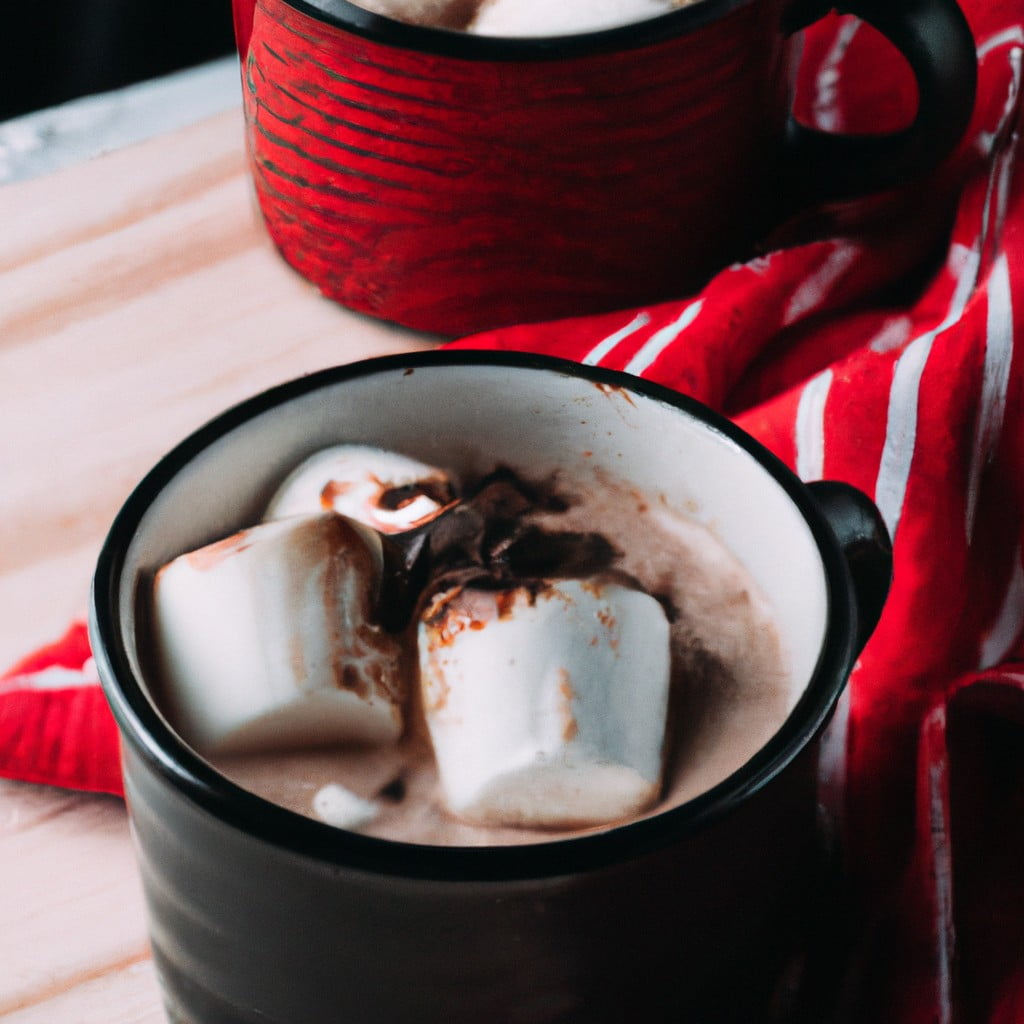This how-to guide offers easy steps to making rich and creamy hot chocolate at home.
Key takeaways:
- Use quality ingredients like whole milk and high-quality chocolate
- Heat milk, add chocolate and sugar, whisk until smooth
- Optional: add heavy cream, salt, or vanilla extract for extra flavor
- Customize with toppings like whipped cream or cinnamon
- Hot cocoa is made with cocoa powder, hot chocolate with actual chocolate pieces
Inside
Homemade Hot Chocolate Ingredients

To craft a rich and comforting cup of hot chocolate, starting with quality ingredients is key. Opt for whole milk or a combination of milk and heavy cream for a creamy base.
For the chocolate, choose high-quality chocolate bars with a cocoa content of 60-70% for a balance of sweetness and deep chocolate flavor. Unsweetened cocoa powder can also be used for a more intense taste.
Granulated sugar adjusts sweetness, while a pinch of salt enhances the chocolate’s complexity. Vanilla extract adds a warm background note.
For a thicker consistency, consider using a small amount of cornstarch dissolved in milk. Optional spices such as cinnamon or chili powder introduce a unique twist to the classic hot chocolate.
Hot Chocolate Recipe Instructions
Gather equipment—a saucepan and a whisk or spoon.
Heat the milk in the saucepan over medium heat until it begins to warm and steam.
Add the chocolate, chopped finely to ensure even melting, and the sugar.
Whisk continuously until the chocolate is fully melted, and the mixture becomes smooth and creamy.
For a richer taste, mix in a small amount of heavy cream.
Avoid boiling to prevent a skin from forming on the top.
To incorporate additional flavor, add a pinch of salt or a splash of vanilla extract once removed from heat.
Serve immediately, pouring into mugs.
Customize each serving with preferred toppings or stir-ins, like a cinnamon stick, a dollop of whipped cream, or a few marshmallows.
Nutrition Facts of Hot Chocolate
The nutritional content of homemade hot chocolate can vary greatly depending on the ingredients used. A traditional recipe may include milk, cocoa powder, sugar, and possibly chocolate.
Here are some points to consider:
- Calories: A standard cup of hot chocolate contains around 200-300 calories, with full-fat milk versions on the higher end.
Macronutrients: Expect a blend of carbohydrates from the sugar and milk, protein from the milk, and a modest amount of fat, also from the milk and any added chocolate.
Sugar: A cup typically has quite a bit of sugar, ranging from 10 to 20 grams. To reduce sugar, consider using a sugar substitute or dark chocolate with a high cocoa content.
Dietary Fiber: Cocoa powder offers a bit of fiber, with about 1-3 grams per serving, which is beneficial for digestive health.
Vitamins and Minerals: Milk is a good source of calcium and vitamin D, if fortified. Cocoa provides iron, magnesium, and antioxidants.
For those with dietary restrictions, plant-based milks like almond or coconut can be used, and sugar-free variations can be made with sweeteners like stevia. Keep in mind that all substitutions will affect the final nutrition profile.
Hot Chocolate Toppings and Variations
For a personalized twist, consider these popular toppings and variations:
- Whipped Cream: A generous dollop can make your drink delightfully creamy.
- Marshmallows: Mini or large, marshmallows add a classic touch as they melt into the warmth.
- Chocolate Shavings: Sprinkle finely shaved chocolate on top for added richness.
- Caramel Drizzle: A swirl of caramel sauce introduces a buttery sweetness.
- Cinnamon or Nutmeg: A pinch of either spice complements the chocolate’s complexity.
To venture beyond the classic, explore these variations:
- Spiced Hot Chocolate: Infuse your milk with a cinnamon stick, star anise, and a dash of chili powder for a spicy kick.
- White Hot Chocolate: Substitute milk or dark chocolate with white chocolate for a different flavor profile.
- Mocha Variation: Blend in a shot of espresso or a spoon of instant coffee for a caffeinated twist.
- Vegan Hot Chocolate: Use plant-based milk alternatives and vegan chocolate.
These modifications allow for a tailored experience, catering to preferences and dietary restrictions. Choose one or combine several to enhance your hot chocolate enjoyment.
Difference Between Hot Cocoa and Hot Chocolate
While often used interchangeably, hot cocoa and hot chocolate are distinct beverages with different preparations.
Hot cocoa is made with cocoa powder, which is chocolate pressed free of all its richness, meaning the fat of cocoa butter.
Typically, it’s sweeter, with a lighter and smoother texture.
In contrast, hot chocolate is prepared from actual chocolate pieces that melt into milk or cream, resulting in a thicker, more decadent drink that retains the chocolate’s full-bodied flavor and creamy consistency.
This difference leads to variations in taste, texture, and richness, with hot chocolate being the more indulgent option of the two.




